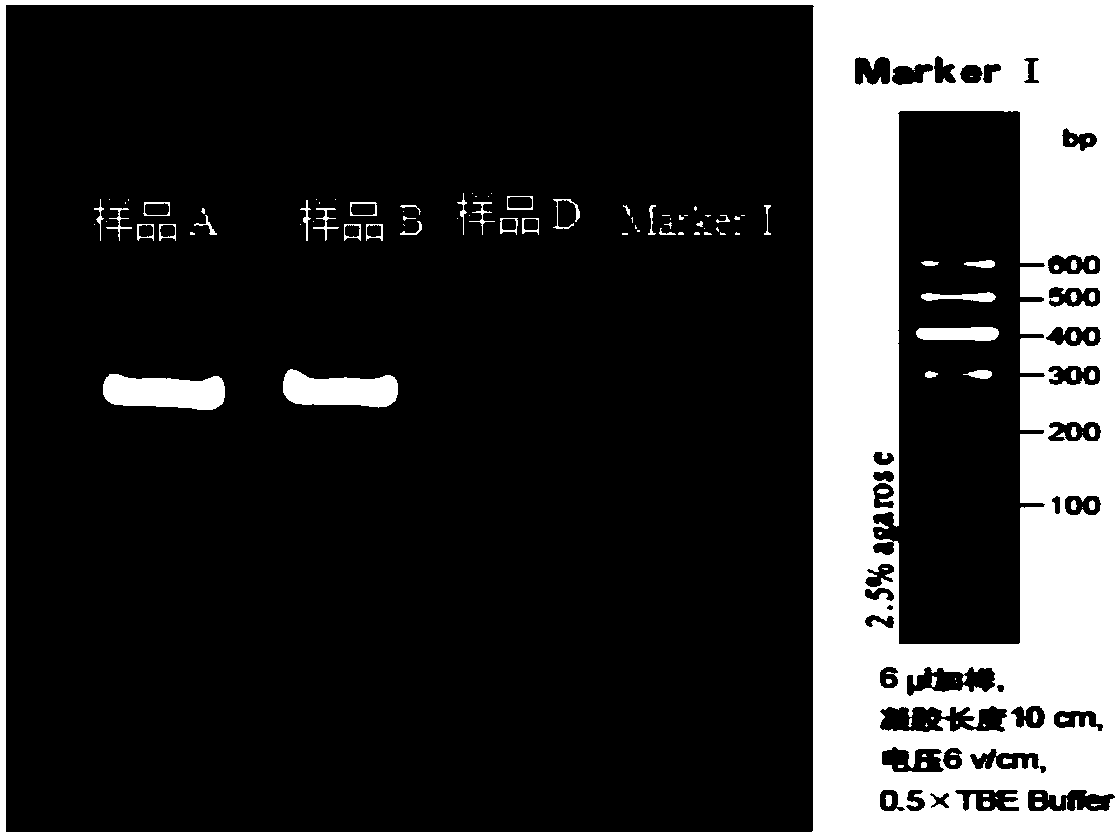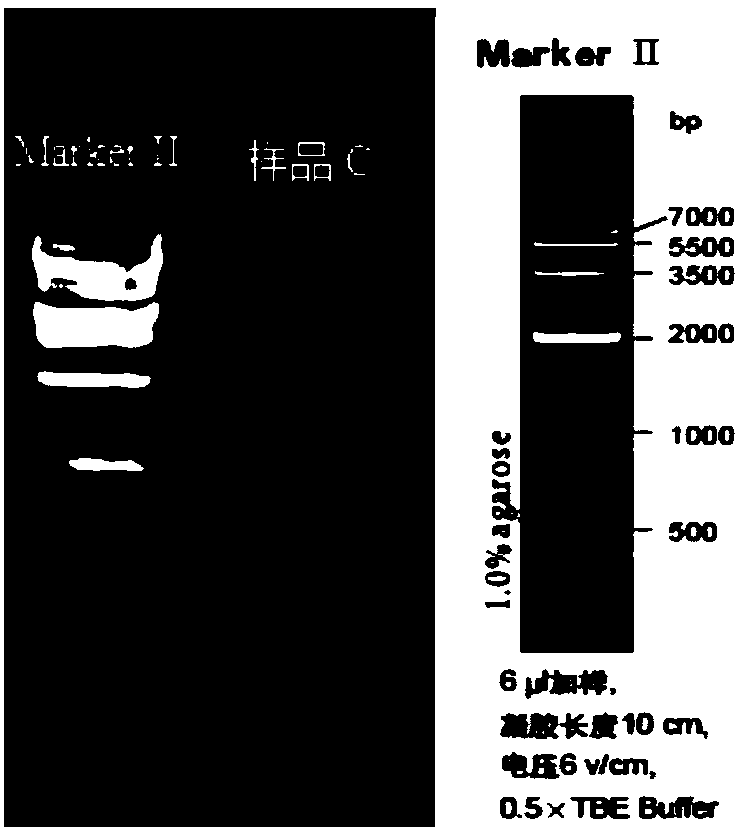Detection kit and system for detecting fragile X chromosome syndrome
An X chromosome and kit technology, applied in the biological and medical fields, can solve the problems of inability to determine the number of CGG repeats, difficult and effective PCR amplification, etc., and achieve the effects of high accuracy, low DNA amount, and optimized amplification system
- Summary
- Abstract
- Description
- Claims
- Application Information
AI Technical Summary
Problems solved by technology
Method used
Image
Examples
Embodiment 1
[0027] Example 1: Extraction of Venous Peripheral Blood DNA
[0028] Follow the DNA extraction steps below to extract the DNA of the four samples of ABCD:
[0029] 1. Dispense 400 μL of erythrocyte lysate (QIAGEN, Cat: 158904) into a 1.5 mL centrifuge tube, add 200 μL of venous peripheral blood from four patients, and mix well;
[0030] 2. Incubate at 56°C for 10 minutes, during which time mix well;
[0031] 3. Centrifuge at 13,000 g for 1 min, discard the supernatant, add 200 μL of cell lysate (QIAGEN, Cat: 158906), and mix well;
[0032] 4. Add 10 μL proteinase K (QIAGEN, Cat: 158918) and mix well;
[0033] 5. Centrifuge at 13000g for 1min, transfer the supernatant to a clean 1.5mL centrifuge tube, add 400μL isopropanol, mix well, and you can see DNA precipitate after mixing;
[0034] 6. Centrifuge at 13,000 g for 1 min, discard the supernatant, and add 400 μL of 70% ethanol to rinse the precipitate;
[0035] 7. Centrifuge at 13000g for 1min, discard the supernatant, and...
Embodiment 2
[0038] Embodiment 2: PCR amplification
[0039] The primers shown in the following table 1 and the amplification system shown in table 2 are used to amplify the DNA sample prepared in Example 1:
[0040] Table 1: Primer sequences
[0041]
[0042]
[0043] Note: FAM indicates that the 5' end of the primer sequence is modified by FAM type, FAM: 6-carboxyfluorescein, the signal color is blue; NO indicates that the sequence is not modified.
[0044] PCR amplification system: Each sample is amplified in two tubes, labeled as Q system and TP system, and the amplification systems are as follows:
[0045] Table 2: Amplification System
[0046]
[0047]
[0048] The PCR amplification procedure is as follows:
[0049] Table 3: PCR Amplification Procedure
[0050]
[0051] After the reaction is completed, the amplified product is recovered for future use. The product of the obtained Q scheme was subjected to ordinary agarose gel electrophoresis, and the results were ...
Embodiment 3
[0053] Example 3: Analyzing the four amplified products according to the fragment analysis process
[0054] 1. ABI fragment analysis
[0055] 1) Mix the Q system and TP system products in a volume ratio of 2:1;
[0056] 2) Add 1 μl of mixed PCR to 9 μl formamide containing 0.2 μl Liz 1200 internal standard (ABI, Cat: 4379950, as a reference for judging sample size);
[0057]3) Denature at 95°C for 4-10 minutes, put it into an ABI 3130XL sequencer for detection, and obtain the original capillary electrophoresis data.
[0058] 2. Data analysis
[0059] 1) Open GeneMarker 2.2.0 and import the original capillary electrophoresis data;
[0060] 2) Click Project in the upper left corner and select Run;
[0061] 3) Select Panel, Size Standard, Standard Color in the Run wizard interface to define;
[0062] 4) Set the range of the X-axis in the menu to 150-1000;
[0063] 5) Use GeneMarker to read the data to generate a map, and obtain the size of the full-length fragment. The maps...
PUM
 Login to View More
Login to View More Abstract
Description
Claims
Application Information
 Login to View More
Login to View More - R&D
- Intellectual Property
- Life Sciences
- Materials
- Tech Scout
- Unparalleled Data Quality
- Higher Quality Content
- 60% Fewer Hallucinations
Browse by: Latest US Patents, China's latest patents, Technical Efficacy Thesaurus, Application Domain, Technology Topic, Popular Technical Reports.
© 2025 PatSnap. All rights reserved.Legal|Privacy policy|Modern Slavery Act Transparency Statement|Sitemap|About US| Contact US: help@patsnap.com



